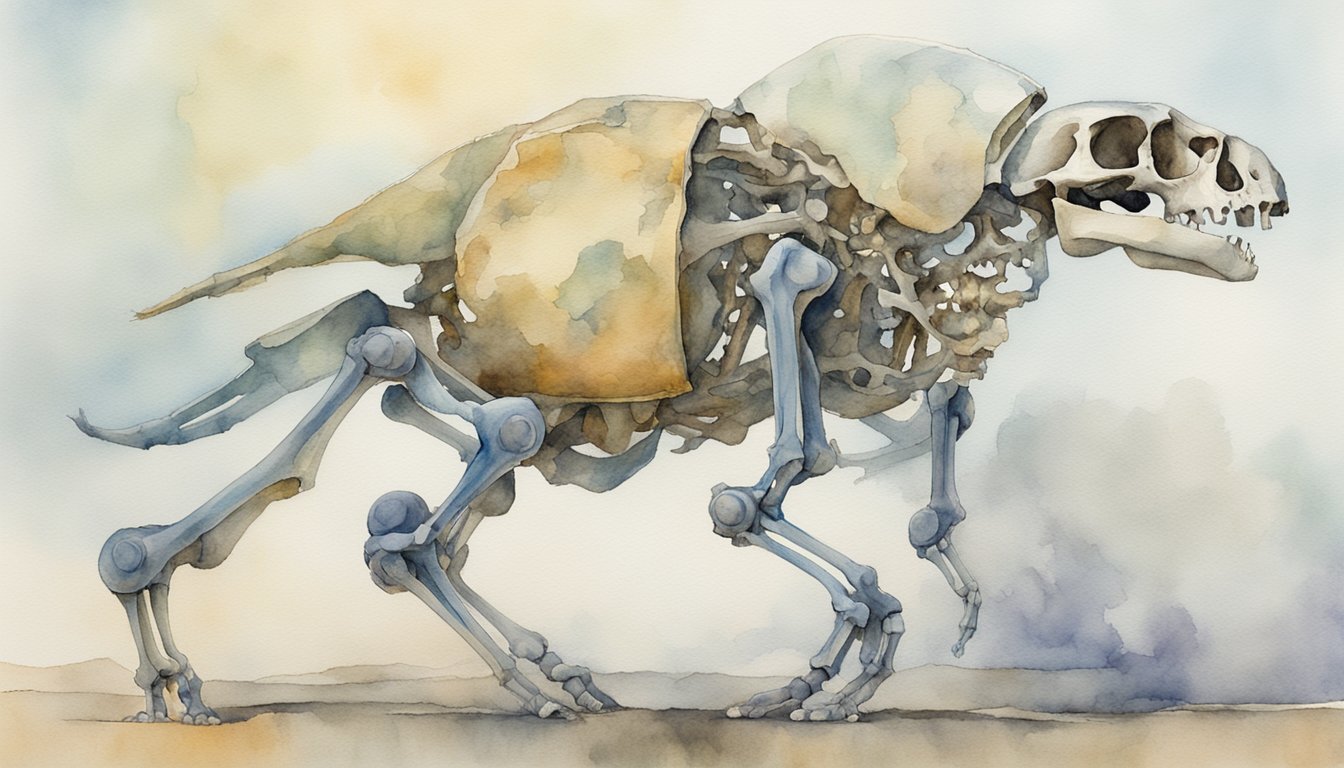Origins and Early Development
The journey of human evolution begins with the emergence of the first hominins and spans millions of years of genetic, anatomical, and cultural development. Through the painstaking work of anthropologists and with each new fossil discovery, we unravel the complex tapestry of our past.
Emergence of the First Hominins
Research suggests that the lineage leading to modern humans diverged from the chimpanzee lineage, our closest living relatives, around 6 to 7 million years ago in Africa. The evidence points to a variety of early hominins, including species like Ardipithecus and Australopithecus, which exhibit both ape-like and human-like characteristics. Notably, Ardipithecus was more apelike in its skull and teeth while Australopithecus, including the famous Lucy, showed adaptations for bipedalism.
Genetics and Ancestry
DNA analysis has become a crucial tool in tracing the human family tree. Genetics suggest that all humans share a common ancestor with the great apes—chimpanzees and bonobos. Studies of the human genome have revealed a long and complex evolutionary path influenced by gene flow from hominin relatives like Neanderthals and Denisovans.
Fossil Records and Discoveries
Africa, being the cradle of humankind, has yielded the most significant hominid fossil finds. Sites like Jebel Irhoud in Morocco, Florisbad in South Africa, and Herto in Ethiopia have produced fossil evidence that reshapes our understanding of human development. These discoveries include early Homo species like Homo erectus, which many anthropologists consider to be a direct ancestor of Homo sapiens.
Stone Tools and Early Technology
The use of stone tools is one of the earliest technological innovations by hominins. Sites like Ologesailie in Kenya have provided rich archaeological records of tool use. The crafting of stone tools allowed these early humans to adapt to diverse environments, process food, and even defend themselves, paving the way for further complexity in human behavior and culture.
Expansion and Diversification
After originating in Africa, Homo species ventured into other continents. Fossil evidence shows that Homo erectus reached Asia, while later, Neanderthals thrived in Europe and Denisovans in Siberia. The recent discovery of Homo floresiensis in Indonesia and evidence of Homo sapiens in China display the widespread reach and diversification of hominins. This migration into new environments likely catalyzed further developments in tool-making and cultural practices.
Behavioral and Physical Evolution

Human evolution encompasses remarkable changes in both behavior and physical form over millions of years from our apelike ancestors to modern Homo sapiens. The changes across this vast time span have been fueled by adaptive responses to diverse environments, the development of complex behaviors including language and culture, as well as changes in diet and use of tools.
Development of Language and Culture
Language and culture have been critical aspects in the evolution of Homo sapiens. Early humans transitioned from simple communication systems to complex language, which facilitated the sharing of ideas, collaboration in hunting and gathering, and the creation of social bonds. Cultural artifacts, such as art and instruments, also provide insight into the cognitive abilities of early humans and their capacity for symbolic thought.
Evolution of Diet and Use of Fire
The use of fire had a profound impact on human evolution, allowing our ancestors to cook food and leading to changes in the human diet. Cooking not only made food more palatable and safer to consume, but it also increased nutrient availability. The evolution of hunting added more protein-rich meat to the diet, which is a contributing factor in the development of the human brain.
Adaptive Responses to Environment
Environmental pressures have shaped human evolution significantly. As early Homo species spread across various environments, they adapted to new challenges, from extreme weather to differing food sources. Traits such as darker skin in sun-rich areas near the equator and lighter skin in areas with less sunlight emerged due to these pressures.
Evidence of Social Structures
Social structures and cooperation have been essential for survival in human history. Archaeological finds, including burial sites, indicate the presence of complex social behaviors and beliefs. The evidence of care for the elderly and sick demonstrates empathy and social bonding, which are hallmarks of modern human behavior.
Modern Human Migration and Interbreeding
As modern humans emerged, they began to migrate out of Africa into Europe and Asia. Interbreeding with other hominin species such as Neanderthals and Denisovans occurred, leaving a genetic legacy in present-day humans outside Africa.
Continued Evolution and Future
Human evolution is an ongoing process, with genetics providing a view into past adaptations and potential future changes. Research in evolutionary anthropology sheds light on the way modern humans continue to adapt to new challenges like urban living and changes in diet. As our environment evolves, so too do the selective pressures that will shape future generations.

